“Imagine the irony of a person who only wanted to be a Krishna bhakta, becoming the head of an institution. When I was asked to step up to the task, I was rather uncomfortable doing so”
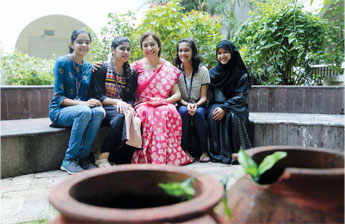 Dr Gulshan Gidwani believes in being a friend and guide to her girls
Dr Gulshan Gidwani believes in being a friend and guide to her girlsHer unassuming persona belies the impressive roll call of her achievements. Not only has Dr Gulshan Gidwani helmed this august institution for over 18 years now, she has been at the forefront of inarguably, what has been the most tumultuous and techno-savvy decade for college education, particularly one focused on women’s empowerment. From successfully leading the college’s bid for autonomy, to diversifying into an MBA college to using and designing technology to best effect, she’s gone the distance, all the while ensuring the college stays true to the raison d’être of its foundation: society before self, and kindling the light of education for one and all.
Her stint as dean of St. Mira’s College for women, Pune has seen a relentless and largely fruitful attempt at balance: On the one hand there is paperless examination and technology, on the other, the college’s USP, its emphasis on a separate time space dedicated to prayer and sanctuary. Both co-exist simultaneously. If, on one hand, efforts are stepped up to safeguard the security of women students against the backdrop of an increasingly chaotic and disruptive world, the other side sees the students continuing to participate in social outreach programmes, be it the adoption of homeless animals (given the college emphasis on non-violence) or other aspects of women’s empowerment.
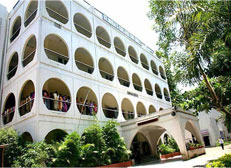 St. Mira’s College was the first non-professional college in Maharashtra to apply for autonomy in 2005
St. Mira’s College was the first non-professional college in Maharashtra to apply for autonomy in 2005To sum up the history briefly, Mira’s College is a part of the ‘Mira Movement in Education’. Founded in the year 1962, St. Mira’s is a deam of realisation of the dream of the progressive visionary, saint, philosopher Sadhu T L Vaswani.
The college enjoys the rare honour of being the first city college, affiliated to Pune University, to be accredited by NAAC as also the first accredited Arts and Commerce college to go autonomous. Recently, the college also added a Science wing.
Preparation is key to all that she does though—as is evident from the sign outside her cabin: ‘If I had eight hours to cut a tree, I would spent six sharpening my axe.’
And sure enough, her life’s journey reflects the adage.
In conversation with Kalyani Sardesai, the soft-spoken Dr Gidwani outlines the challenges, past and present, even as she readies her girls to take on the future with positivity, grace and confidence.
It undoubtedly does! The feedback we receive from employers is proof enough: they say there is a core integrity and sincerity about a St. Mira’s student that separates her from the others. It is this goodness that they value; after all, competence and skills can be taught, values cannot be. A young professional has to come adequately equipped with them. In fact, a recent correspondence from a CEO testifies to this; the gentleman said that they hadn’t picked up so many students from any one college and they were glad they had done so with St. Mira’s students.
As some would know, the Mira Movement in Education was born out of the vision of a philosopher-saint Sadhu Vaswani, himself a distinguished and erudite professor. What was truly remarkable about him was that he believed in woman power long before the word feminism was even heard of. He founded the Mira School in Sindh in 1932, and the model institution was all set to evolve into a Mira University when the Partition of India forced him and his band of workers to leave their homeland, Sindh, and migrate to Maharashtra in independent India.
This state, with its proud history of culture and liberalism was the ideal ground for the Mira Movement to take new roots. The Mira schools and college were set up in quick succession. St. Mira’s College established in 1962, was one of the pioneering colleges set up exclusively for girls in Pune. Today, the college is a member of the Mira family consisting of nine educational institutions located across India in Pune, New Delhi, Vadodara, Rajkot, Ahmedabad and Jaipur. The Mira Movement’s headquarter is in Pune, and is headed by the renowned Dada J P Vaswani.
The motivation of the movement is simple: Educate a man and you educate an individual; educate a woman and you empower a whole family.
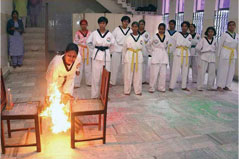 St. Mira’s idea of empowerment is not merely turning out women professionals to compete with men, but to ensure it is accompanied with an overall understanding of their unique identities
St. Mira’s idea of empowerment is not merely turning out women professionals to compete with men, but to ensure it is accompanied with an overall understanding of their unique identitiesOh, they sure have changed enormously. Sure, internalisation and service continue to be our motto, but they have to be part of a well-developed, skilled persona that is a proud value addition to any workforce. No more are jobs seen as just that; they are careers meant to accompany the individual for the next few decades and young ladies are investing that much thought, planning and care in choosing something meaningful and intellectually stimulating. There is this wonderful, new focus on growth, not just on job security.When an individual chooses a career, she wants to know what prospects for growth and development will it offer her in the days to come and the education and environment she receives in college has to be true to that aspiration.
It does so, with awareness and thought. Yes, turning out skilled professionals is extremely important, and our bid for autonomy testifies to that. But our idea of empowerment is not merely building women professionals to compete with men, it is to ensure it is accompanied with an overall understanding of their unique identities. The changes in our curriculum testifies to this: not only do we have a Women’s Studies centre on campus offering programmes and courses on gender studies, each subject is taught with a special emphasis on the role of women. So in sociology we teach them about the ‘Founding Mothers’ instead of ‘Founding Fathers’, in entrepreneurship, we teach them about women entrepreneurs, so on and so forth.
We applied for autonomy in 2005, and were the first non-professional college in Maharashtra to do so. Thus far, the only colleges that had willfully sought autonomy were the ones offering professional courses such as engineering, medicine and so on. It was an accepted practice down South, but in Maharashtra, not so. At the core of this, was the understanding and acceptance that we needed a well-rounded, competitive curriculum that was not specific to our turf, but would instead equip our girls to be competent professionals, citizens and role models in any environment.
In response, the Government of Maharashtra, identified 12 educational institutions, including our own, to be fast-tracked on the path to autonomy. To that extent, we were required to understand its inherent risks and ramifications and sent on a tour to different autonomous colleges to see how they had gone about designing an individualistic curriculum and system that worked for them. Autonomy is a complex matter that involves taking both the management and staff with you; all the stakeholders have to be equally convinced about it. Other colleges faced opposition from their managements, because it entailed the management giving up some of its powers, but despite being part of a religious NGO, our management was supportive.
Yes, our core philosophy has always been to do good quietly, but in today’s day and age, you have to be seen to be doing good. Visibility is important too.
Also, autonomy is synonymous with accountability. Only such educational institutions that have a track record of excellent academic performances, credibility and are well known for healthy and ethical practices are granted autonomy. An academic board (for each subject) has been constituted with eminent academia drawn from reputed institutions, industrialists, university representatives and practising professionals. Members of this board meet periodically to change the system, if need be.
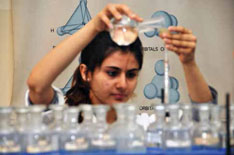 A science wing has been recently added, considering the advances in technology
A science wing has been recently added, considering the advances in technologyAlso, autonomy is synonymous with accountability. Only such educational institutions that have a track record of excellent academic performances, credibility and are well known for healthy and ethical practices are granted autonomy. An academic board (for each subject) has been constituted with eminent academia drawn from reputed institutions, industrialists, university representatives and practising professionals. Members of this board meet periodically tochange the system, if need be.
For Teaching, Learning and Evaluation, we have -
This is a repository of study material such as PowerPoint, diagrams, charts, etc. prepared by teachers for independent use by students. The repository (in the college, electronic and computer laboratories) has ensured a customised version of resources useful to the students.
It is especially suitable for subjects in which answers are in sequential order (e.g. Mathematics, Accounts, Grammar). The user is able to monitor her own performance, detect her weak areas and can access her scores immediately.
This generates the examination timetable for every class and every examination by successfully catering to the large number of variables involved in examination timetable preparation such as subject combinations offered by students, number of papers to be corrected by every individual teacher, order of preference, time slots in between two examinations to allow for study, etc.
This is linked to the exam timetable scheduler. The exam officer gets a combination of question papers scheduled for the day just one hour prior to the commencement of the examination. The system randomly selects one question paper from the question paper bank, inserts the date of examination and makes it available for printing.
This question paper set is then automatically marked as ‘Used’; it gets excluded from the ‘activated’ folder and moves into the ‘deactivated’. As the question paper selector is now the computer, the innovation has strengthened the confidentiality required in the selection of a question paper set and has done away with the menace of question paper leakage that looms large during every exam conducted in our country.
This has added a new dimension to internal testing under the autonomous system. It enables teachers to test all aspects of a student’s expertise in a particular subject, go beyond theoretical knowledge evaluation techniques by including the interpretation of pictures, videos, graphs, mathematical symbols, etc.
In audio format for visually impaired students, lectures delivered by the teachers and textbooks and reference material are stored in audio format to enhance academic learning and accurate evaluation for the visually impaired students of the college, using computer technology. It helps to do away with the tedium of employing unsuitable ‘writers’ for the visually impaired.
To monitor individual student progression, to keep track of the academic progress of an entire department, and to keep track of the academic progress of the college as a whole.
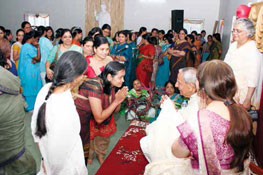 Dada Vaswani’s warmth and wisdom continues to motivate the girls
Dada Vaswani’s warmth and wisdom continues to motivate the girlsSanctuary or Prayer has been a way of life at St. Mira’s College. It is a multi-religious approach that has students from different backgrounds bringing their spiritual, religious and cultural traditions to a single altar of prayer. So we have choirs singing hymns, bhajans or shabads. There are readings from assorted religious books, which is a fine way, not only of inducing young minds to reflect on deeper issues of life, but also better-acquainting them with India’s rich and secular heritage. Be it in the thought of the day, or a student of member of staff waxing eloquent on a single human value—honesty, integrity, compassion and so on, we find creative ways of going about it, through song, skits, audio visual presentations and discussions. We believe this one practice helps build a valuable new dimension in a youngster’s life.
Being part of the Sadhu Vaswani Mission, respect for all forms of life has been an unwavering principle of the college, even in the face of change. Considering the advances made by technology in recent years, there was no reason why scans and computer graphics could not be used to show the internal anatomy of an animal, instead of killing it. This would not only educate the students, but also save lives of animals. Once I got the go-ahead from Maneka Gandhi, to the effect, we lost no time in setting up a junior college for Science, to accompany the Arts and Commerce streams at long last.
Setting up a nursing college was the next logical step. I do know for a fact that a lot of young girls want to be healers, but due to lack of availability of seats, make do with Arts and Commerce instead. But their hearts are not in it. Our BSC in Nursing course offers a degree programme to create world-class professionals in the world of healing.
The MBA college, similarly that is headed by Dr Bhgawanti Nanwani, offers programmes in HR, Marketing, Finance and Accounting, and currently has 120 students.
“We have interpreted ‘Information and Communication Technology (ICT)’ as an umbrella term to include any communication device or application, encompassing, television, cellular phones, computer, and network hardware and software, satellite systems and so on as well as the various services and applications associated with them, such as videoconferencing and distance learning”
Technology has been an excellent and able partner in making the changes we wanted in the way we teach, learn and test our students.
We have interpreted ‘Information and Communication Technology (ICT)’ as an umbrella term to include any communication device or application, encompassing television, cellular phones, computer, and network hardware and software, satellite systems and so on, as well as the various services and applications associated with them, such as videoconferencing and distance learning.
In our attempt to support and improve the learning of students and to develop learning environments, we have used ICT for developing course material; delivering content and sharing content, increase communication between learners, teachers and the outside world, creation and delivery of presentation and lectures, academic research, administrative support, student enrolment and facilitate the transaction of our routine jobs under an autonomous setup.
More importantly, most of the software that we have acquired has been indigenously devised by a team of highly dedicated and proactive teachers from the Computer Science department.
Yes, of course, technology and responsibility need to go hand in hand. Every year we have a lecture from the cybercrime cell; it is imperative for girls to recognise and understand the potential pitfalls of social networking and excessive sharing of personal details online. But our proactive approach towards our girls’ safety does not stop there. When the Pune police implemented the ‘Police Kaka’ scheme beseeching citizens, particularly students to report cases of stalking and petty crimes, we were the first to invite the officials to speak to our students. They were happy to note that within a few days, two of our girls had availed of the facility and reported cases of stalking and harassment to the cops.
Also, we teach self-defence as a subject and over 200 girls per year graduate with the skills of self-defence.
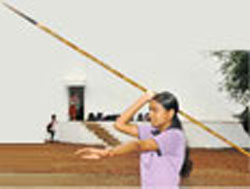
Social outreach has always been at the centre of all we do. Each individual has a duty not just to be a productive member of the workforce to the best of her God-given abilities, but she must also help others wherever and whichever way she can.
Compassion and respect for life is something we strongly believe in—and we take every opportunity to practically demonstrate to the student the value of life. Instead of lecturing them endlessly on non-vegetarianism, we give them the opportunity to interact with animals, be it as volunteers for animal rights groups, or helping tending for a wounded or orphaned animal we may have adopted on campus. We keep having these adoption melas for abandoned animals, and students have the opportunity to help find them a suitable home or shelter.
Similarly, though we don’t force the students to attend programmes at the mission, as I have never believed in forcing my views on them, I incentivise it for them by giving them double the attendance that I do for their lectures as and when on important occasions, as part of the college programme, they attend interactive sessions with Dada. Once the connect happens, they look forward to being a part of the social outreach programmes of the mission.
We also have a Diwali sale each year, where students and staff, from relatively underprivileged backgrounds have the opportunity to buy items of clothing, art, and household utilities at throwaway prices. These items have been pooled together by each one’s contribution.
Discipline is the key to all our activities, but we believe in gentle and humane discipline; the kind that seeks to correct the wrong, instead of punishing the wrongdoer. Personally speaking, I don’t believe in ‘punishment’ because it dents the self image and morale of the errant student.
We believe more in counselling rather than in punishing.
Once we had just such a student, who was reported by the counsellor to be very destructive. I called her to my office, and offered her one single space in college to restrict her destructive activity to. Initially, she refused my offer, shame-faced and distraught, but within two days returned to ask if I was indeed serious about my offer. I said, yes. She asked for the college canteen to be vacated and given to her for her activity for a period of three days. She also asked for Rs. 1,500. When I discussed this with the college Discipline Committee, they cautioned me against consenting to her request saying, I was asking for trouble; there was no telling what damage she would unleash upon the canteen if left unsupervised. Nevertheless, I persisted. My gut instinct told me I ought to let the experiment happen.
At the end of three days, when we entered the canteen we were dumbstruck to see the most beautiful murals on the walls—more lovely and creative than anything we had seen before. The cause of her destructive behavior was that she was this artistic, disturbed soul who was dying to paint and draw and create. Today, she happens to be creative director at one of the nation’s leading ad agencies. Tell me now what would have happened had we chosen to harshly punish the child ? Our duty as educators is to get to the bottom of the behaviour, not just look at the superficial symptoms.
“Social outreach has always been at the centre of all we do. Each individual has a duty not just to be a productive member of the work force to the best of her God-given abilities, but she must also help others wherever and whichever way she can. Compassion and respect for life is something we strongly believe in—and we take every opportunity to practically demonstrate to the student the value of life”
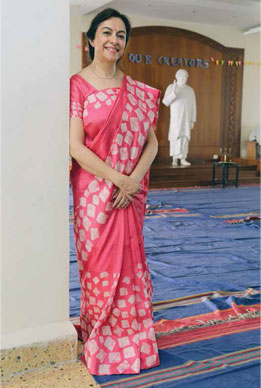
I was born in Pune to a family devoted to Sadhu Vaswani’s teachings. We were a simple, spiritually inclined family. In fact, my paternal aunt or bua was the first teacher at Sadhu Vaswani’s school in 1933.
As for me, my entire schooling happened at St. Mira’s School and College.
I was a nervous, quiet and shy young person who was happy to complete her B Com and then work in a bank. I wore fullsleeved dresses, mainly white. My life was pretty much the satsang. However, Dada, who knew me well personally, thought I had potential beyond it. He urged me not to take up the bank job but to complete my post-graduation in Pune’s Wadia College as Mira’s College did not offer PG Courses then. When I finished, he suggested I apply as a lecturer. This was absolutely shocking for me; I was such a reserved person, happy to be in a corner. I certainly did not see myself teaching. But with his backing and encouragement, I took it on, slowly learning on the job. It was such a sea-change for me, I tell you, to have to be centre stage and take responsibility. It was a complete U-turn from the way I had envisaged my life to be. What’s more, at each stage, the course of events have flowed in a manner as to make me wonder if there was a bigger, divine purpose to things.
Though I had my hands full, he insisted I pursue my PhD. This was a tall task, as I was teaching and studying at the same time. As time went on, the toughness of my schedule did not allow me to write down my thesis on Pharmaceutical Marketing though I had completed my field work. This is when I had a fall, sustained multiple fractures in my leg and was confined to bed. I had to go through seven surgeries over three years. But this enforced confinement finally gave me the time to complete my thesis writing.
I did not see the necessity for it, but as it so panned out, when I was eventually asked to take over as Principal, the Govt. rules mandated that principals had to have a doctorate degree as an eligibility criterion. All of this does make me wonder if it was ordained. I have no wish to exaggerate whatsoever but the detours brought about by my circumstances have been adequate for the specific role Dada had in mind for me.
What’s more, my personality has gradually evolved over time: from someone who was extremely quiet, to someone who, by virtue of her role in life, has had to be communicative, assertive and incharge. The white clothes I favoured gave way to coloured, crisply laundered sarees, when Dada mildly asked me how I intended to take people with me, if my clothes proclaimed a distance between me and the rest. “Do you want to be holier than thou”? he asked, and I saw what he meant. As a professor, I had to be the focus of attention for hours. My visual appearance had to be as identifiable and positive as my knowledge of subject and teaching abilities.
Like every setback in life, my accident with my leg taught me a lot. Despite so many surgeries, the bones just wouldn’t heal. Dada was a huge support in this time, constantly enquiring about me. One thing about him is that he is also very practical. As treatment after treatment failed to yield results, Dada suggested I take an appointment with the famous Mumbai-based surgeon Dr Dholakia considered to be the best in Asia. Initially, I was told I could not get an appointment for at least three months as he was extremely busy. So Dada suggested I park myself in his clinic. I did just that-though it was extremely uncomfortable to do so with my leg in plaster from hips to toes.
I sat in his clinic till 11 am, and finally as he readied to leave for the day, he saw me. We talked and he examined my leg. His verdict was not encouraging: there was no calcification; my bones were like stubs. And the way the fracture was, it was hard for the two portions to join. Worse, my bones were weak, which was why the graft was not holding. He said some portion of the bone had to be cut to facilitate healing. However, he could not do it for me as he was leaving the very next day for Germany. There was one doctor, however, he said, if he could be persuaded to help me. Sadly, though, that doctor did not perform surgeries any more due to a horrific setback in his life. Apparently, one day as he was on his way to hospital for an urgent operation, there was an accident right in front of him. His car, which had the medico’s insignia, was stopped, and as as a doctor he was asked to help. No way could he stop though, as his patient had already been given anesthesia. So he told the crowd: he would move ahead, and send an ambulance to collect the child. He would ask casualty to keep everything ready.
After he finished his operation, he went to check up on the child who was in the casualty. They told him he had not survived as he had not been brought to hospital in time. The doctor pushed the cover aside to look at the child and went numb as he found himself gazing into the face of his own dead son!
That cruel and unbelievable blow rendered him unable to perform surgeries anymore, as his hands would tremble! When I went to see him—as he was still a consultant—he told me sevhe sympathised, but would not be able to help me. I had no choice but to return to my hotel room. A day later, I got a call from his staff. The doctor had asked me to get admitted to Jaslok Hospital and then he would see what he could do. The surgery went off smoothly. When he came to see me the next day though, he was dumbstruck to see Dada’s photo next to my bedside table. Who was that man, he asked ? I told him he was my guru.
The doctor said, he was the very same man who had come in his dream and asked him to perform my surgery, assuring him all would be fine. And it was! My leg healed, there wasn’t even half an mm of difference between the length of my two legs which was very unusual in a surgery of this sort!
For his part, the doctor expressed his fervent gratitude towards Dada, the man who had given him his skill back.
Let me answer this with an anecdote from school when we were asked to write an essay as to what we wanted to become when we grew up. While everyone else they wanted to be a doctor, engineer, teacher and so on—I was the only one who said I wanted to be St. Mira!
So imagine the irony of a person who only wanted to be a Krishna bhakta, becoming the head of an institution. When I was asked to step up to the task, I was rather uncomfortable doing so. In fact, I told Dada: you are taking away St. Mira’s tanpura and replacing it with Arjun’s quiver of arrows. But no regrets. It has been a beautiful, enriching and rewarding journey and each day with my girls is an offering to Sri Krishna!
Sri Krishna arpanam!
Kalyani Sardesai